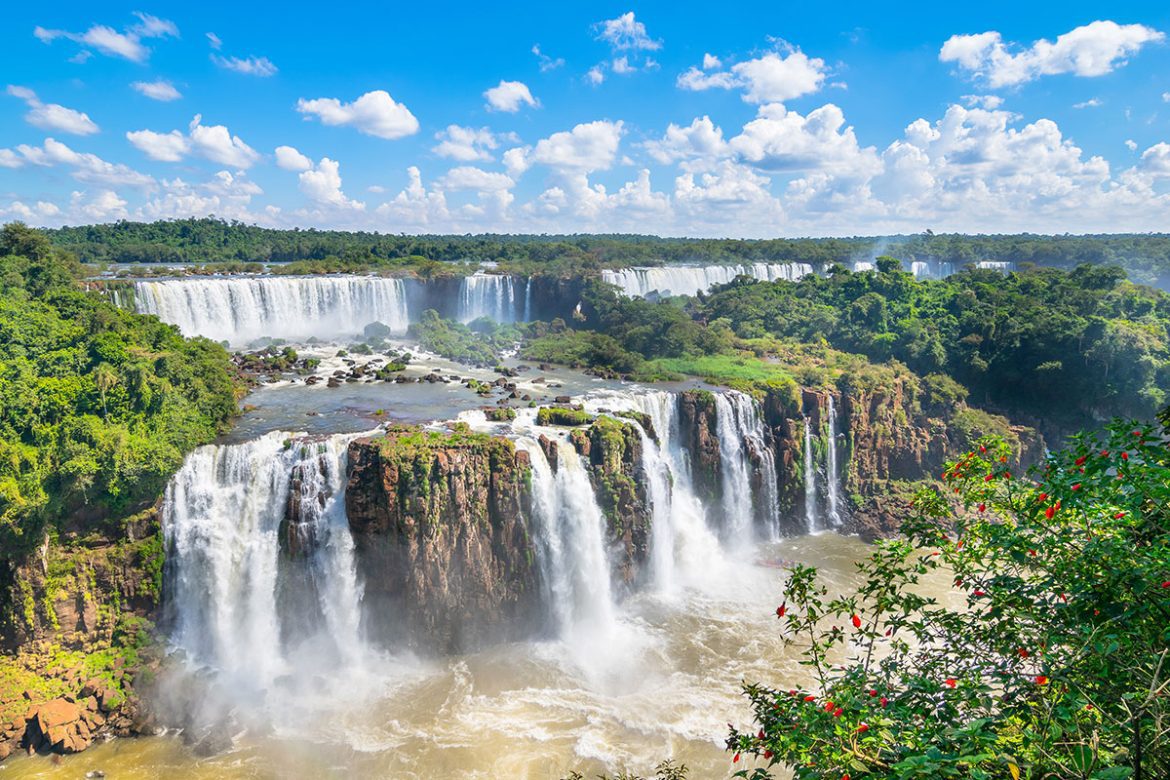Brazil, spanning half of South America, is the world’s fifth-largest nation. Its 7,500 km (4,600 km) of coastline is dotted with white-sand beaches, tropical islands, music-filled metropolises, and attractive colonial villages.
Impressive waterfalls, wildlife-rich marshes, and the unspoiled Amazon rainforest are just a few of the attractions waiting to be explored by visitors in Brazil’s interior.
The Portuguese colonised the biggest nation in South America, Brazil, in the year 1500. They kept control of the country for another 300 years. Historic colonial cities still retain many of the architectural and cultural features that make them unique. Brazilian beaches are world-famous for their surfing waves and picturesque scenery, and are just as popular as the country’s other tourist attractions. There are several fantastic beaches in the Rio region, and some of them may be so remote that just getting there may be an experience. Discover some of Brazil’s finest attractions here.
27. Porto de Galinhas
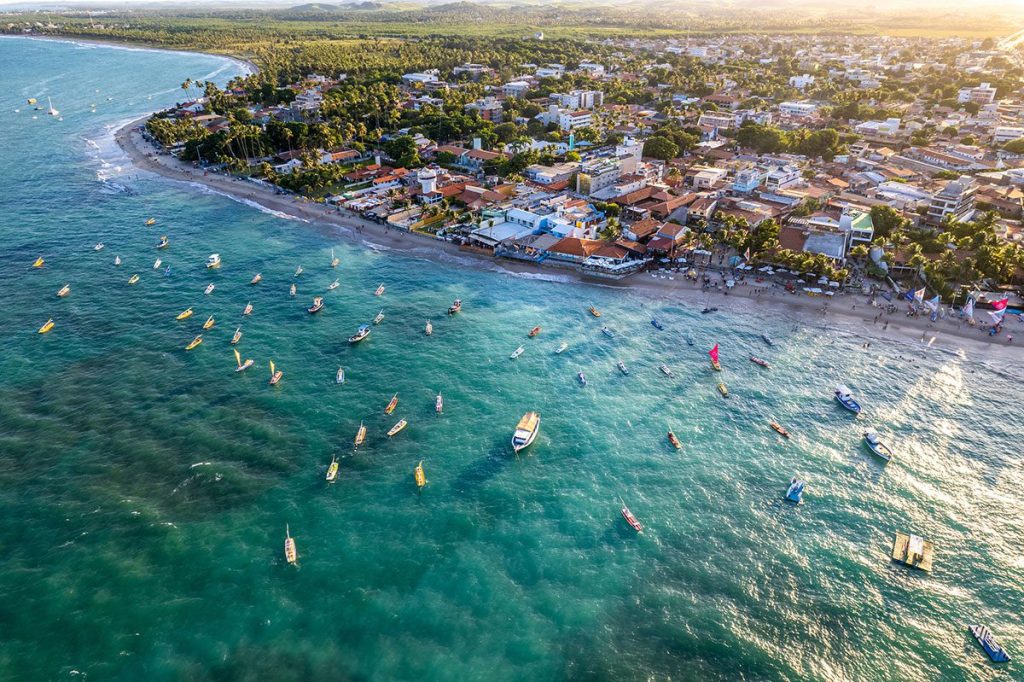
An aerial view of the stunning Porto de Galinhas beaches in Pernambuco, Brazil. Image source: Brastock/Shutterstock.com
Porto de Galinhas, one of Brazil’s booming beach attractions, sees crowds of vacationers every summer. What, then, is it about Porto de Galinhas that makes it so unique? White sand beaches, blue oceans, pleasant temperatures, and a variety of comfortable hotel options are only the beginning of the attractions here.
The beautiful natural pools that occur in the reefs at low tide at Porto de Galinhas are what really set this place apart.
26. Campos do Jordao

A scenic view of the beautiful Campos do Jordao in Sao Paulo, Brazil. Image source: eli medeiros/Shutterstock.com
Located in the stunning Mantiqueira Mountains at an altitude of more than 1,600 metres (5,300 feet) above sea level, this hamlet is Brazil’s highest. This resort town is located at a high altitude, making it a welcome respite from the sweltering summer heat in Brazil.
Most people know Campos do Jordao for its annual Winter Festival, a classical music festival that takes place in the city every July and attracts performers from all over the globe. Horseback riding, jeep trips, and cable car rides are just a few of the many active excursions available to tourists in this area.
25. Lencois Maranhenses National Park
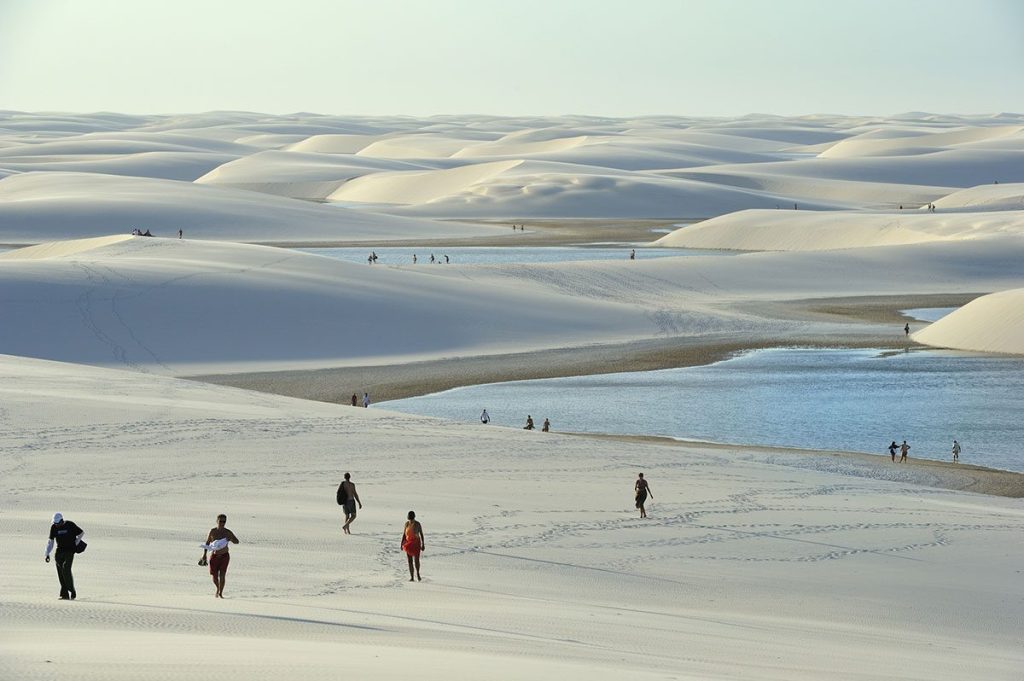
A breathtaking view of the sand dunes in Maranhenses National Park, Brazil. Image source: T photography/Shutterstock.com
Most people think of Brazil in terms of its beautiful beaches and lush rainforests, not its sand dunes. Huge sand dunes, however, may be found at Lencois Maranhenses, one of the country’s most fascinating national parks. Although we are far from the Sahara, this is not a desert. In fact, the tremendous rains of July produce stunningly beautiful lagoons, the depths of which may reach up to 3 metres (10 feet) in certain places.
There are fish in these ephemeral lakes, which dry up during the dry season. Visitors may swim, although the water is likely to be warm. These pools may become as hot as 30 degrees Celsius (87 degrees Fahrenheit).
24. Florianopolis Beaches

A beautiful view of the coastline at Mole beach in Brazil. Image source: Wonderful Nature/Shutterstock.com
Surfers, partygoers, and sunbathers flock to Florianopolis, sometimes called Floripa, for its 42 beaches. Joaquina Beach, with its towering sand dunes and high-quality surf, is among the most well-liked in the area. Recently, though, Joaquina’s rival, Praia Mole, has been grabbing some of the spotlight.
Tourists interested in rubbing shoulders with Hollywood A-listers can travel to Jurere, which is home to several mansions of impressive size and many excellent nightclubs. Lagoinha do Leste is the beach for people who like to spend some time alone. A word of caution, though: it takes roughly a two-hour climb to get to this beach.
23. Praia de Pipa
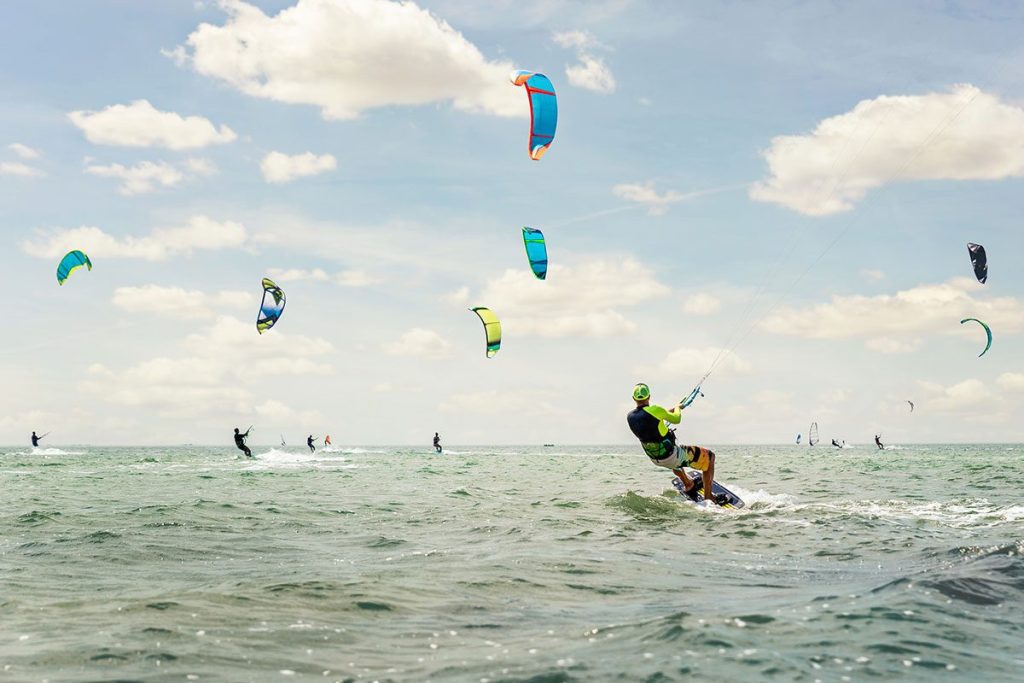
A stunning view of Praia de Pipa beach in Brazil. Image source: Gorloff-KV/Shutterstock.com
Due to its picture-perfect beaches, towering cliffs, and crystal-clear seas, Praia de Pipa has become one of Brazil’s most well-known beach destinations. There is a wide variety of things to do in the town, from surfing and boating to partying all night long.
Despite its widespread appeal, the town is very small because of the presence of ESAs all around it. As a result, sightseers may still take in the area’s natural splendour and enjoy a swim in seas abounding with marine life, such as dolphins and turtles.
22. Museu de Arte Contemporanea

A beautiful view of the Museum of Contemporary Art in Niteroi, Rio de Janeiro, Brazil. Image source: Cacio Murilo/Shutterstock.com
The Museu de Arte Contemporânea (Modern Art Museum) might be mistaken for an inverted chandelier, an alien spacecraft, or a fancy bowl, depending on your point of view.
The museum, which was designed by Oscar Niemeyer and inaugurated in 1996 in Rio’s Niteroi district, offers stunning views of the city and harbour. It has been said by some tourists that the structure itself is more magnificent than the exhibits housed within.
21. Buzios
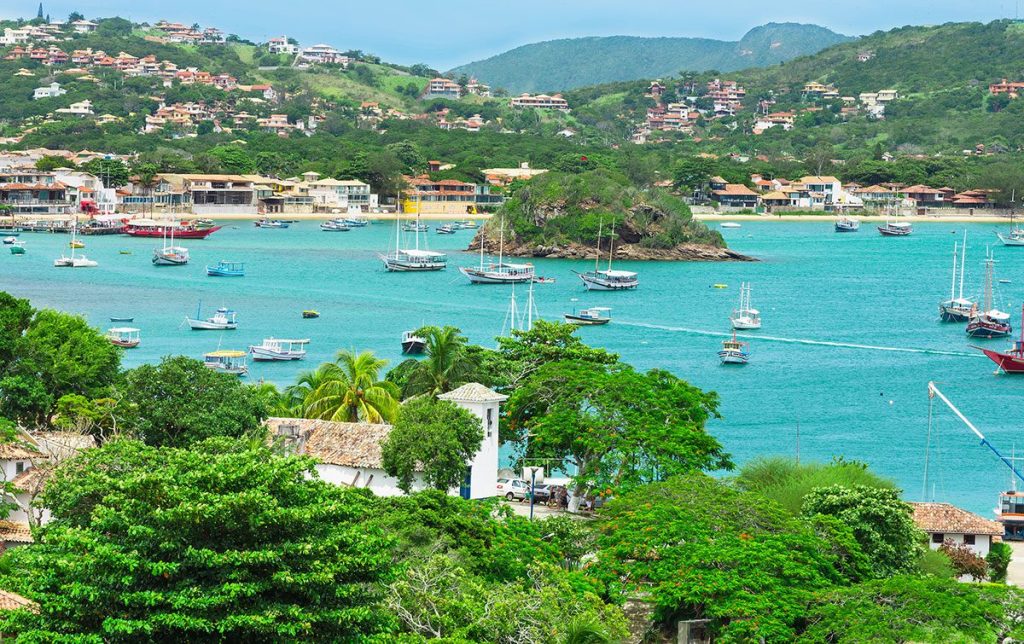
A stunning aerial view of Buzios, Rio de Janeiro, Brazil. Image source: Catarina Belova/Shutterstock.com
Buzios, a beach resort located 105 miles outside of Rio de Janeiro, is a popular destination for vacationers. Buzios is home to 23 beaches, each of which is designed to attract a certain kind of visitor (surfers may like Geriba, while families may go toward Tartaruga).
There’s a colourful fleet of boats in the port of the fishing community that sits along the water’s edge. Snorkeling, scuba diving, hiking, biking, shopping for crafts, and eating on the Rua das Pedras are all very well-liked pastimes.
20. Aparados da Serra National Park
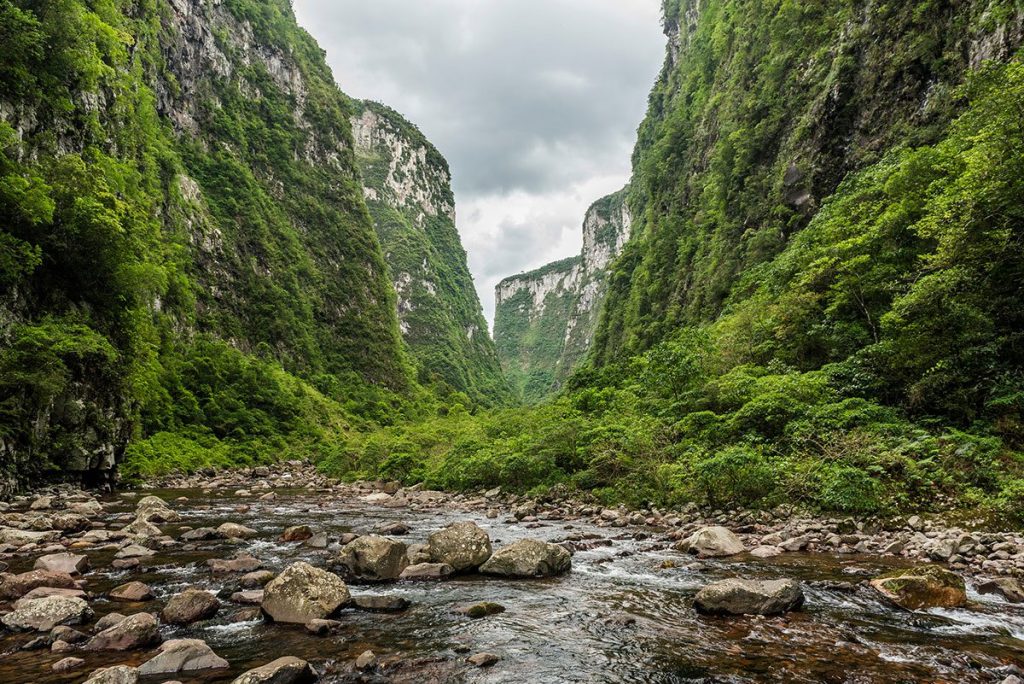
the Aparados da Serra National Park in Cambara do Sul, Rio Grande do Sul, Brazil. Image source: vitormarigo/Shutterstock.com
Protecting Itaimbezinho, one of Brazil’s most magnificent canyons, led to the establishment of Aparados da Serra, one of the country’s first national parks. narrow canyon with subtropical vegetation at its edges and about 720 metres of steep parallel escarpments (2360 feet).
The Rio do Boi makes its way down the canyon floor, and two waterfalls drop into a stone plunge pool before it. From the canyon’s edge, you may make your way down to the river along a rocky route, but be warned: it’s no easy trek.
19. Cathedral of Brasilia
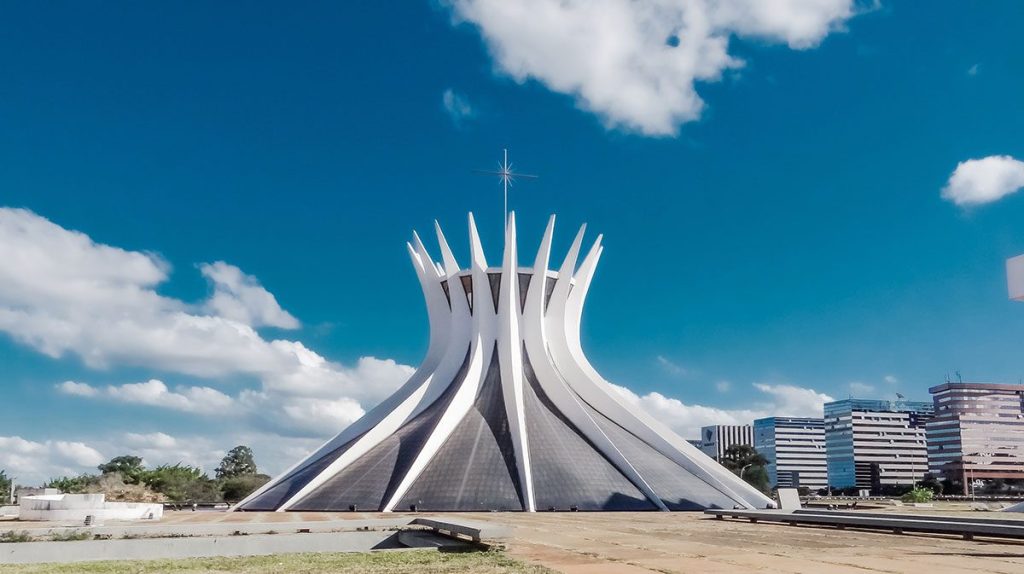
A view of the iconic Metropolitan Cathedral of Brasília, Brazil. Image source: Edson J Ferreira/Shutterstock.com
Whenever a Roman Catholic church doesn’t appear like a church, and especially when Oscar Niemeyer was responsible for the design. When compared to other churches, the Cathedral of Braslia stands apart. It is more like an Indian tent than a church, and it is made up of 16 concrete columns, each weighing 90 tonnes.
The front has Dante Croce’s sculptures of the Four Evangelists, who were completed in 1970. This progressive church certainly deviates from the norm.
18. Pelourinho
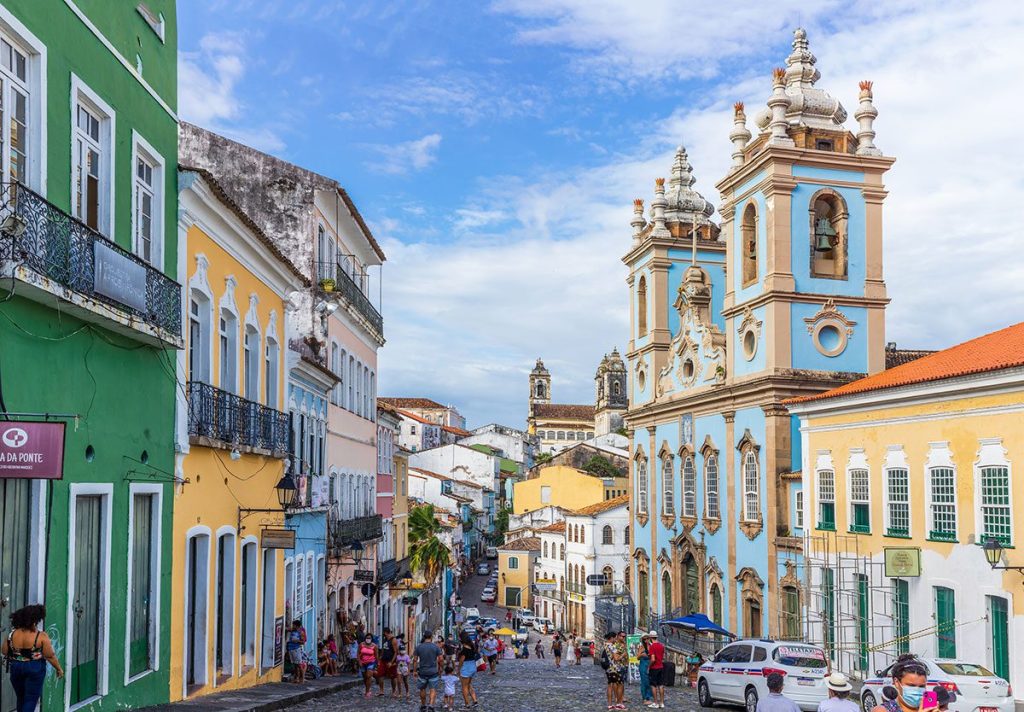
A colorful street in Salvador, Bahia, Brazil. Image source: Luis War/Shutterstock.com
Salvador, one of the oldest cities in the Americas, was founded in 1549 and is home to the city’s ancient district, Pelourinho. The Pelourinho, or “pillory,” is where slaves were taken to be beaten.
The pastel-colored buildings in this historic district are as elegant as the music and dancing that fill the streets. You may get some authentic prawn dishes and local handicrafts here.
17. Ilha Grande

A scenic view of Ilha Grande Abraao Beach in Angra dos Reis, Rio de Janeiro, Brazil. Image source: Arkadij Schell/Shutterstock.com
The stunning “Big Island” (Ilha Grande) is located off the coast of Rio de Janeiro, Brazil. Before becoming a high-security jail in 1994, the area served as a leper colony.
As a result, the island of Ilha Grande has a pristine Atlantic rainforest and stunning tropical beaches. Despite being the island’s biggest settlement, Vila do Abrao is home to barely 1,900 inhabitants. The island has a strict no-car policy.
16. Chapada dos Veadeiros National Park
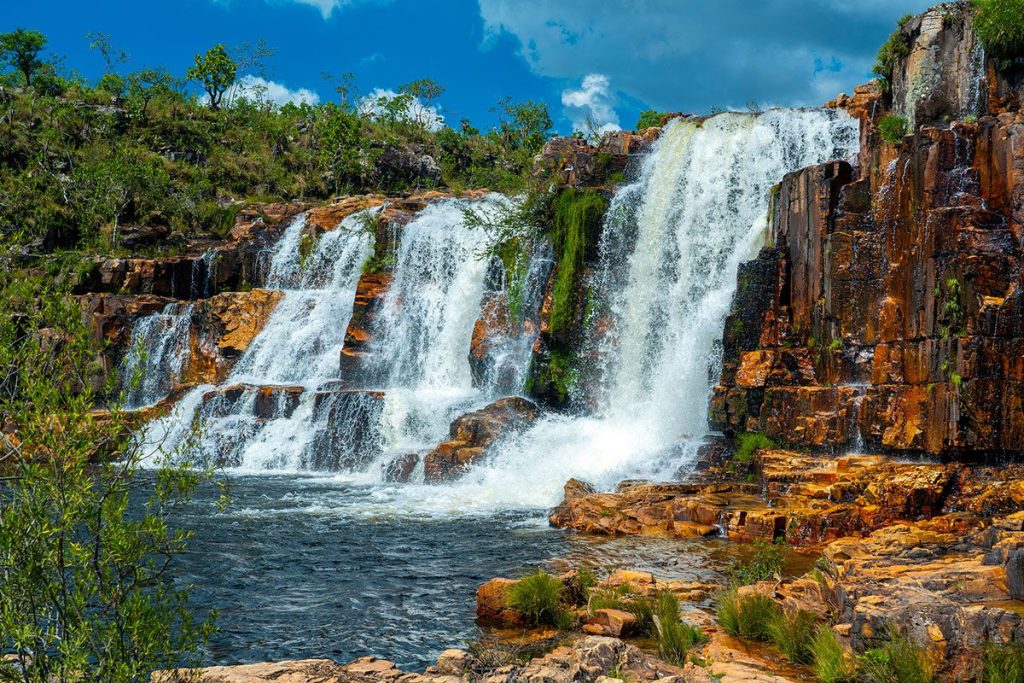
A beautiful view of the Chapada dos Veadeiros National Park in Goias, Brazil. Image source: Luiz Antonio Nasser Jr/Shutterstock.com
About 240 kilometres (150 miles) from Brasilia lies Chapada dos Veadeiros, a national park in Goias state. This area of Brazil is the highlight for many visitors to Brazil due to its abundance of waterfalls, animals, vegetation, and trekking opportunities.
However, they stress that hikers need to be in excellent physical shape since some of the treks are strenuous. Two days in the park is a minimum suggestion.
15. Jericoacoara
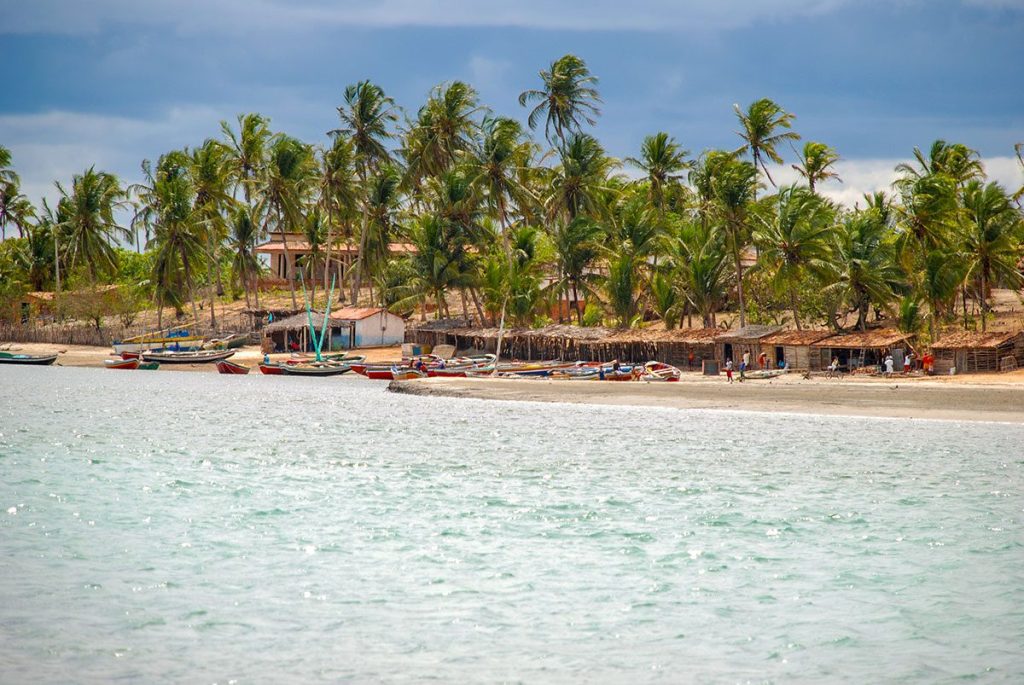
A stunning view of the sunset at Jericoacoara beach in Ceara, Brazil. Image source: rocharibeiro/Shutterstock.com
Getting to Jericoacoara, or Jeri, as it’s called locally, may be challenging due to the bumpy dirt roads, but the pristine beach town may be worth the effort.
Jeri is a lovely area to relax because of its abundance of waterside hammocks, sandy roads that are normally off-limits to cars, and pristine white beaches. Sunsets atop the Por do Sol dune are a famous attraction.
14. Curitiba-Paranagua Train Ride
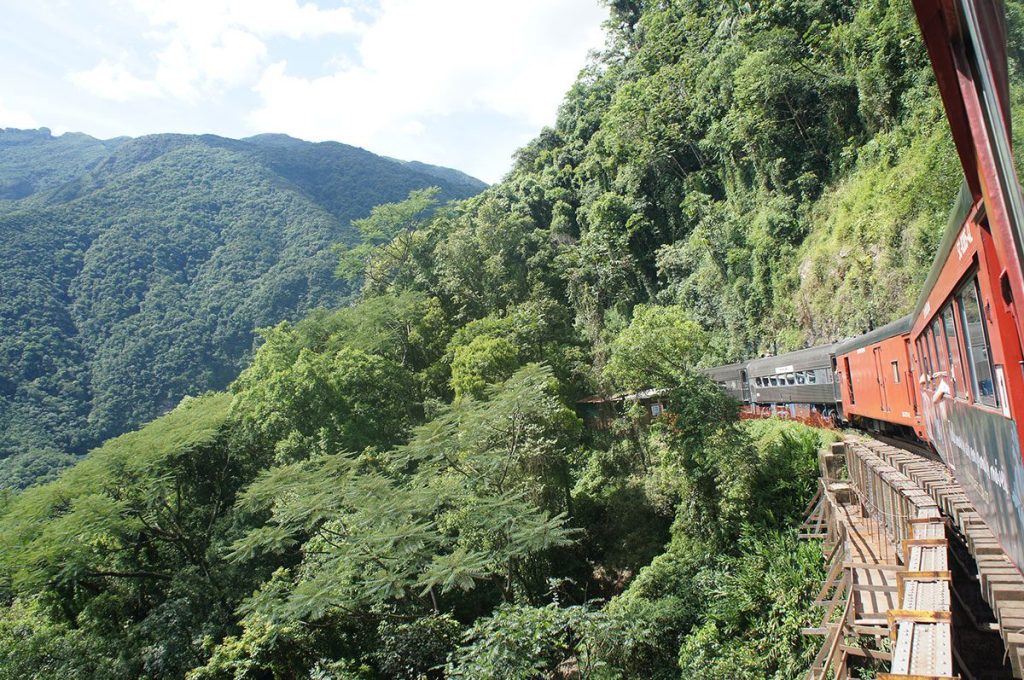
The train ride from Curitiba to Paranagua offers stunning views of the lush green hills. Image source: Luciana Nobre Deliza/Shutterstock.com
One of the most beautiful train trips in Brazil is the Serra Verde Express, which travels from contemporary Curitiba to mediaeval Paranagua in Parana state across 84 kilometres (52 miles) of Atlantic rainforest, 14 tunnels, and 30 bridges. The trip terminates at Morretes six days a week; on Sundays, riders may continue on to the seaside town of Paranagua.
13. Parati
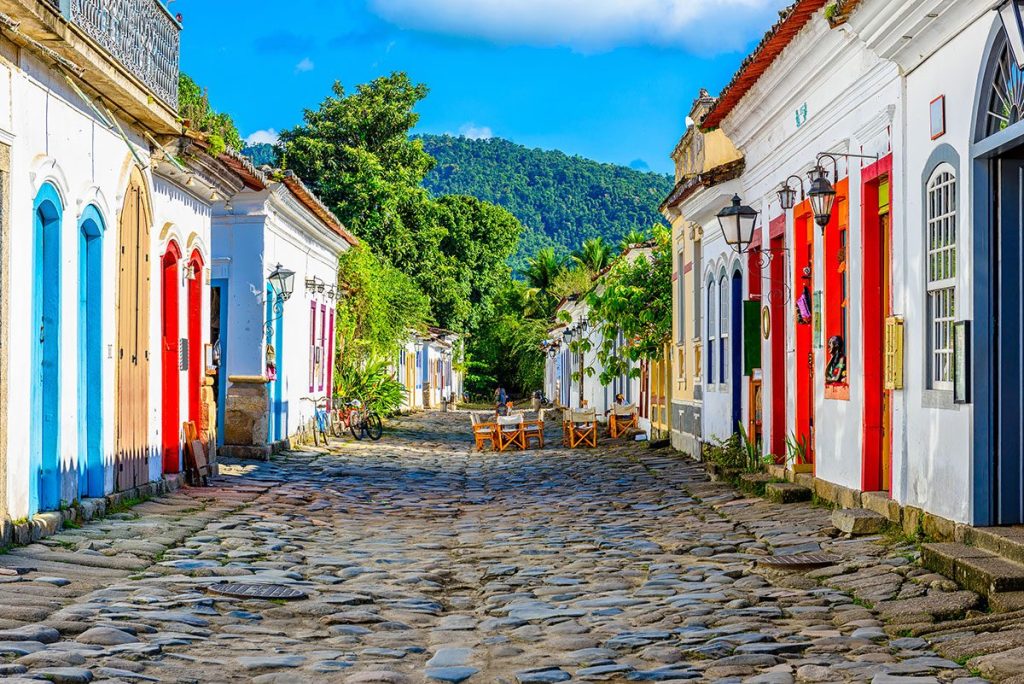
Paraty’s historic center is full of charming, narrow streets like this one. Image source: Catarina Belova/Shutterstock.com
Parati (also known as Paraty) is a great destination for pedestrians since the historic district is car-free. With its brightly painted buildings and lovely beaches, Paraty is one of Brazil’s most beautiful old cities.
Horseback riding through the jungle to the coast is the main draw in this location, which is around 200 kilometres (125 miles) south of Rio. This colonial settlement in the 1600s was a significant supplier of gold to Europe.
12. Copacabana

Copacabana, in Rio de Janeiro, is one of the most famous beaches in the world. It’s about two miles long and dotted with hotels and luxurious mansions, with some more humble properties interspersed. On each side of the beach is a stunning boardwalk made of black-and-white striped Portuguese stone.
In addition to hosting Rio’s world-famous New Year’s Eve celebration, this lively area is also home to a number of fascinating landmarks, such as the historic Copacabana Fort (built in 1914) and the luxurious Hotel Copacabana Palace.
11. Ouro Preto

Ouro Preto (which literally translates to “black gold”) was established at the end of the 17th century and is one of the best-preserved colonial cities in all of Brazil. In a short amount of time, it became the focus of a new gold rush in the Brazilian state of Minas Gerais.
Portions of the city’s Portuguese colonial architecture have been meticulously conserved, and new construction is required to meet strict guidelines designed to protect this heritage. Ouro Preto’s golden cathedrals from the 18th and 19th centuries and the sculptures of Aleijadinho help to make Ouro Preto a top Brazilian tourist destination.
10. Teatro Amazonas

The Amazon Theatre is one of the most beautiful landmarks in Manaus, Brazil. Image source: Arnika Ganten/Shutterstock.com
There is an opera theatre called the Teatro Amazonas in Manaus, right in the middle of the Amazon Rainforest.
During the height of the rubber trade, it was constructed using European and even some Asian elements, such as French furniture, Italian marble, and British steel. The building’s dome was embellished with 36,000 ceramic tiles in the colours of the Brazilian flag.
The Italian opera La Gioconda was the first to be performed there on January 7, 1897. Unfortunately, the opera house was closed not long thereafter because Manaus’s primary source of income—the rubber trade—disappeared. In 1990, after 90 years of inactivity, the Teatro Amazonas once again welcomed audiences for live performances.
9. Fernando de Noronha
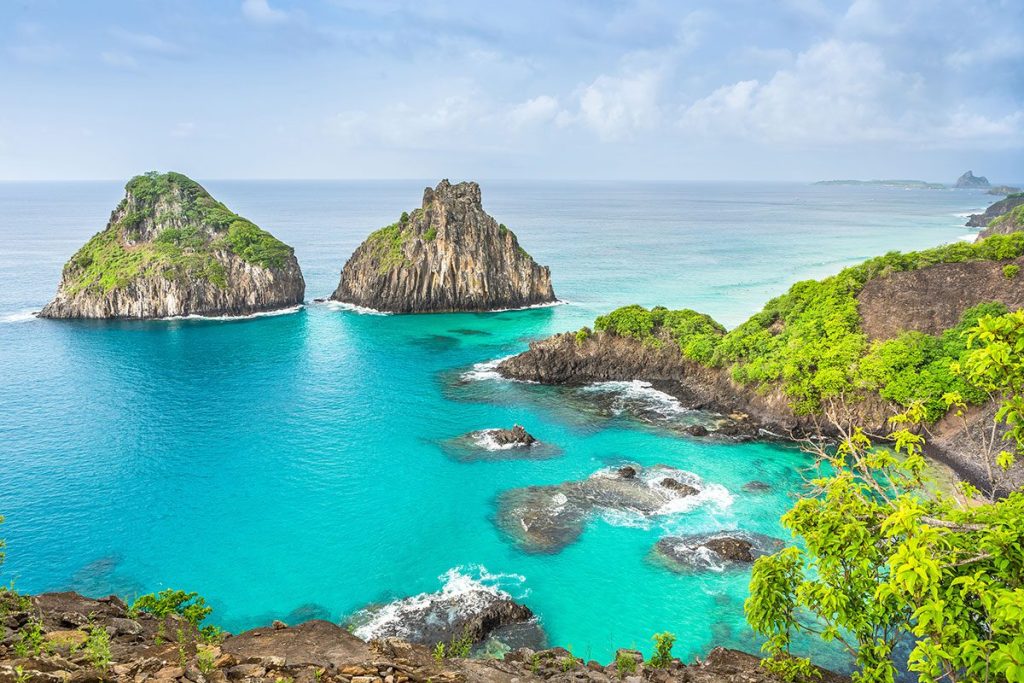
Fernando de Noronha island, a UNESCO World Heritage site located off the coast of Brazil. Image source: Alexandree/Shutterstock.com
Located 354 kilometres (220 miles) off the northeastern coast of Brazil, the Fernando de Noronha archipelago is a sight to see thanks to its pristine beaches, scenery, and animals. Discovered in 1503, the archipelago was inhabited by the Dutch and French until Portugal took control in 1737.
About 3,500 people call the biggest of these 21 islands home now. With warm seas all year and excellent visibility to depths of 50 metres, the islands are a paradise for scuba divers and snorkelers.
8. Bonito

The Grotto of Lago Azul in the city of Bonito, Brazil. Image source: Vinicius Bacarin/Shutterstock.com
Bonito serves as a starting point for ecotourists who want to explore some of the most spectacular waterfalls and cave systems in all of Brazil. The crystal-clear canals, where visitors may swim with exotic species, are, nevertheless, its most alluring feature. And the most daring may go caving in Abismo Anhumas, where they can descend into a cavern and stroll amid stalagmites and other cave formations.
Divers and snorkelers will find even more fantastical structures under the surface of the cavern’s water.
7. Historic Center of Olinda
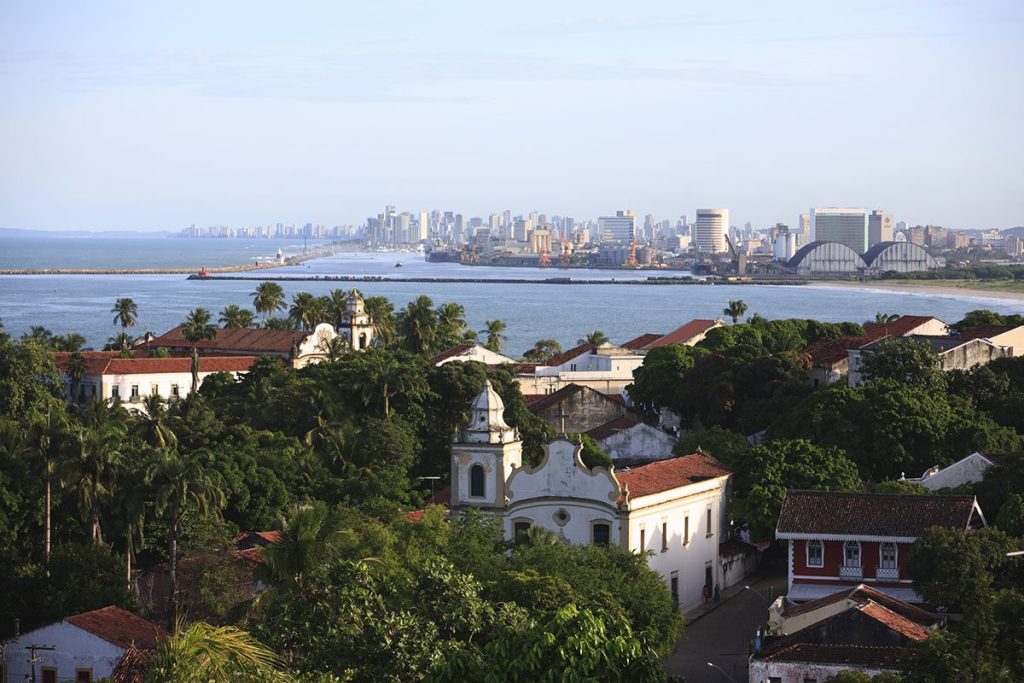
The historic city of Olinda, in the state of Pernambuco, Brazil. Image source: OSTILL is Franck Camhi/Shutterstock.com
Olinda, like Recife, is a well-preserved colonial city on the northeastern coast of Brazil. Olinda is a vibrant metropolis, its white buildings and red roofs standing in sharp contrast to the blue of the Brazilian Atlantic Ocean to the north.
It’s known for the historic district, the churches, and the world-famous Carnival of Olinda, all of which draw many visitors each year. The abundance of cafes, restaurants, and workshops for local artisans only adds to the quaint atmosphere of the area.
6. Salvador Beaches
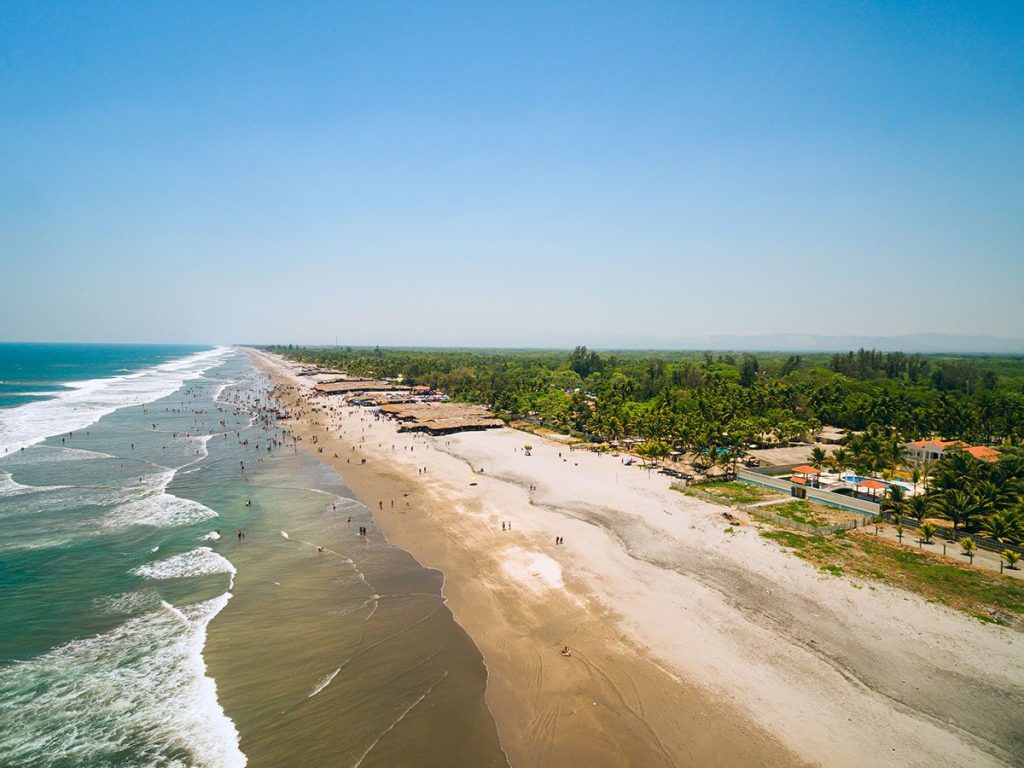
Aerial view of Costa del Sol beach, El Salvador. Image source: Guayo Fuentes/Shutterstock.com
The capital of the state of Bahia, Salvador is home to a charming historical district, a thriving musical scene, and a plethora of world-class beaches. The beaches provide everything from protected coves perfect for swimming, diving, and sailing to open sea beaches with powerful waves beloved by surfers. There are other beaches where the reefs have formed natural stone pools that are safe for kids to play in.
5. Pantanal
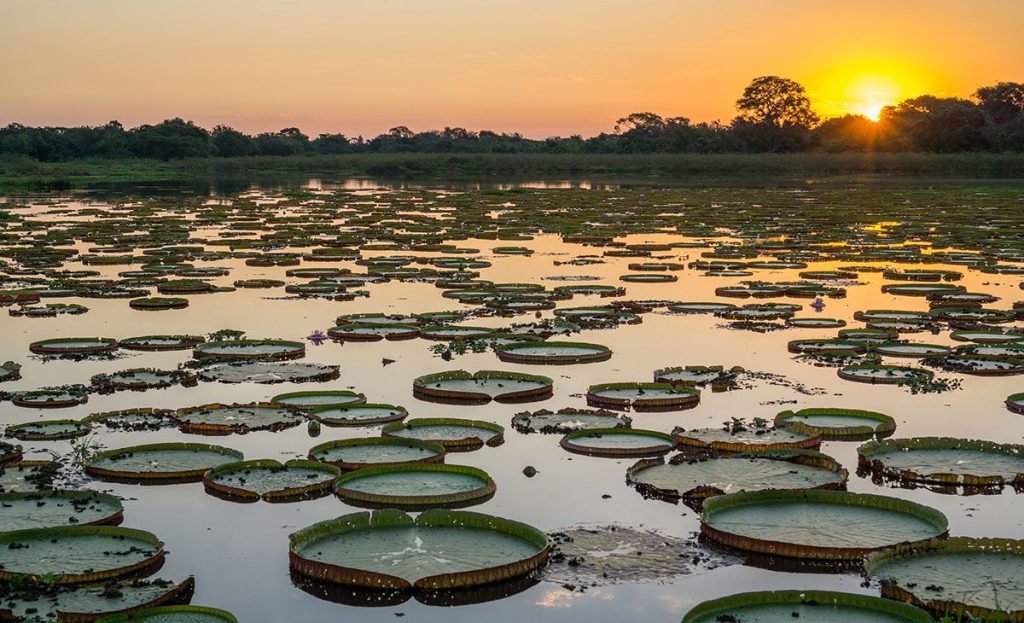
aerial view of the expansive wetlands of the Brazilian Pantanal. Image source: FCG/Shutterstock.com
Although it is mostly located in western Brazil, the Pantanal also crosses into Bolivia and Paraguay. It is a popular destination for tourists because of the abundant animals.
Wildlife sightings are almost assured in the Pantanal, unlike in the Amazon jungle. Massive populations of capybara and the Yacare Cayman may be found there. One of the greatest populations of jaguars in the Americas may be found in the Pantanal.
4. Rio Carnival
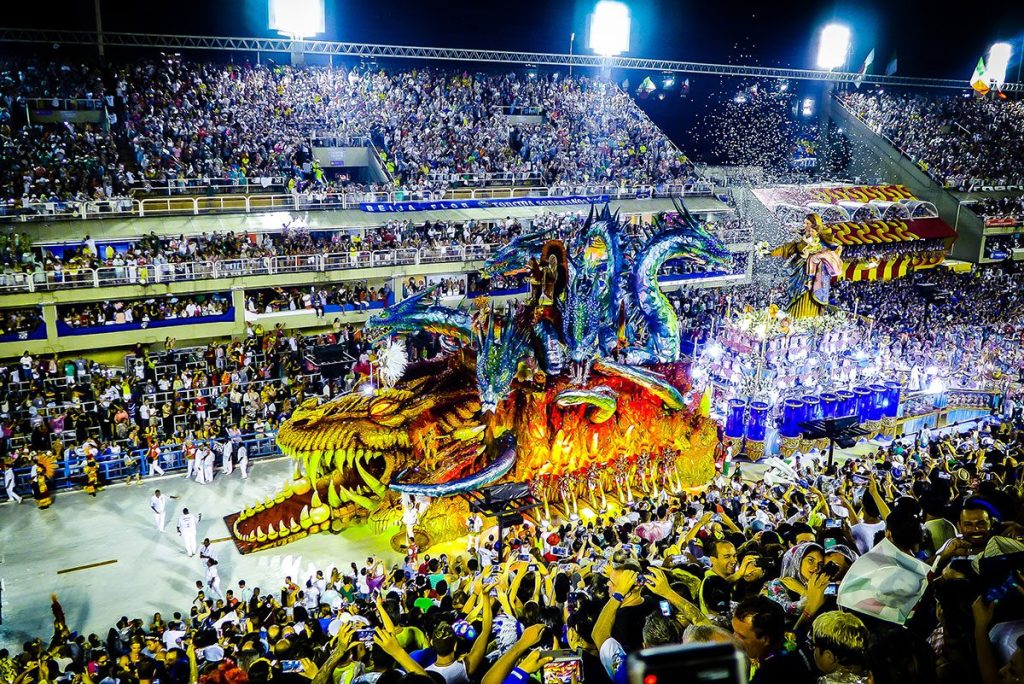
A vibrant and colorful parade during the Carnival festival in Rio de Janeiro, Brazil. Image source: Gustavo Ardila/Shutterstock.com
Almost the whole country of Brazil celebrates carnival, with the most well-known festivals being in the cities of Recife, Olinda, and Salvador. But without a doubt, the Carnival in Rio de Janeiro is the largest and most well-known carnival in the world. During the four-day Rio Carnival, an average of two million locals and tourists flock to the streets.
Carnival is going on all over Rio, in the streets, squares, bars, clubs, and other places. The Rio Samba Parade at the Sambadrome is a great way to end the Carnival.
3. Amazon River
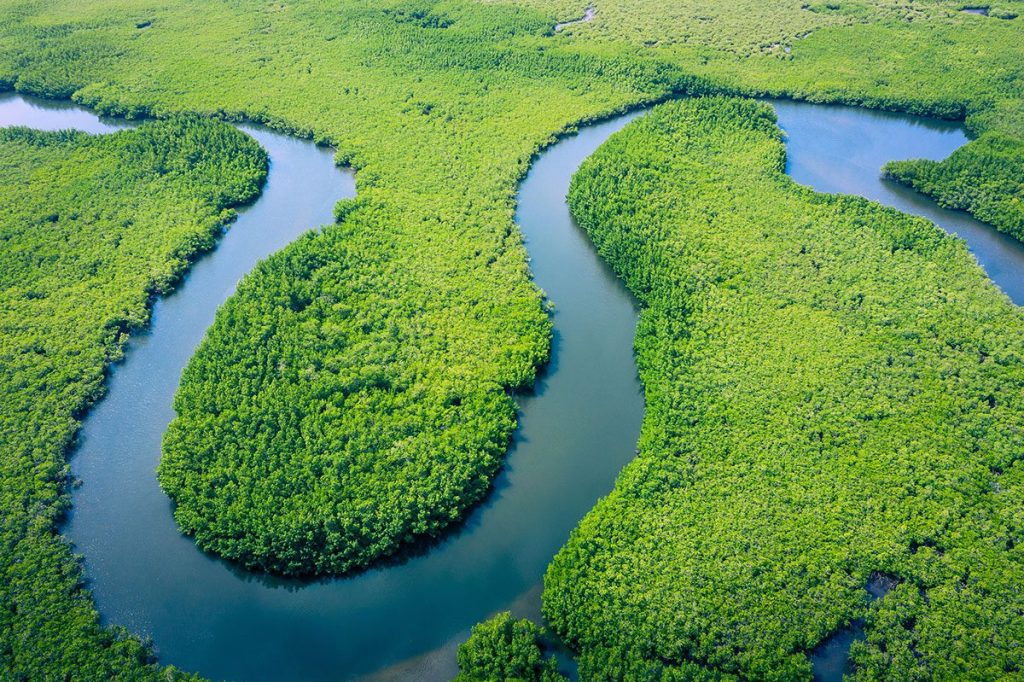
An aerial view of the vast and lush Amazon rainforest in Brazil. Image source: Curioso.Photography/Shutterstock.com
The Amazon River is the world’s biggest by volume and the second longest at around 6,400 km (4,000 miles), behind only the Nile. Over 3,000 fish species have been identified in the Amazon, and more are likely to be found.
Half of the world’s surviving rainforests are found in the Amazon Basin. Jungle excursions focus more on the experience of sailing upriver into the humid, bustling, oppressive ambiance of the Amazon rainforest than on actually viewing animals, despite the fact that ten percent of the world’s estimated 10 million living species may be found there.
2. Iguaçu Falls

A panoramic view of the majestic Iguazu Falls in Brazil. Image source: Nido Huebl/Shutterstock.com
Located on the border between Brazil and Argentina, Iguaçu Falls is widely regarded as one of the world’s greatest natural marvels. There are 275 individual waterfalls in the Iguazu River waterfall system. Of them, the 82-meter-tall U-shaped Devil’s Throat is the most remarkable (269 ft).
All three of Foz do Iguaçu, in Brazil; Puerto Iguaz, in Argentina; and Ciudad del Este, Paraguay, are all reasonable travel options to the falls. There is a lengthy boardwalk that runs alongside the canyon to get to the lower base of the Devil’s Throat from the Brazilian side.
1. Christ the Redeemer
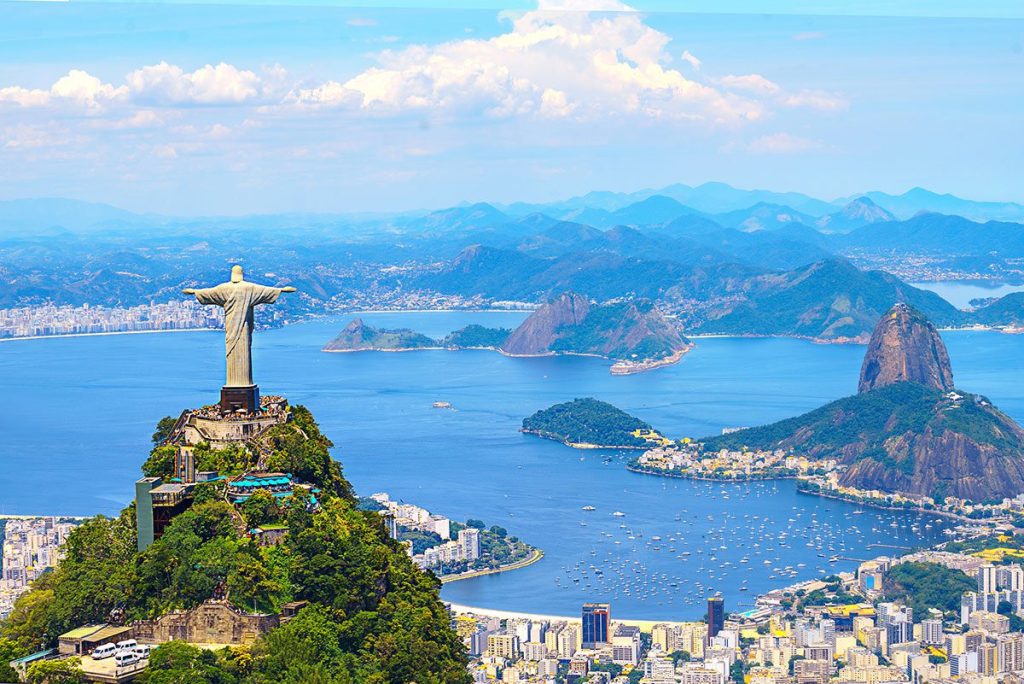
An aerial view of Rio de Janeiro, Brazil, with Christ Redeemer statue. Image source: IrenaV/Shutterstock.com
Rio de Janeiro is home to the world-famous Christ the Redeemer monument. From its vantage point atop Corcovado, a mountain that rises to an altitude of 700 meters (2,300 feet), one may take in breathtaking views of the whole region, from the northern interior of Guanabara Bay to the southern Lagoa Rodrigo de Freitas.
An iconic image of Rio de Janeiro and Brazil, the Christ the Redeemer statue is 39.6 meters (130 feet) tall, with its 9.5 meters (31 feet) base.


